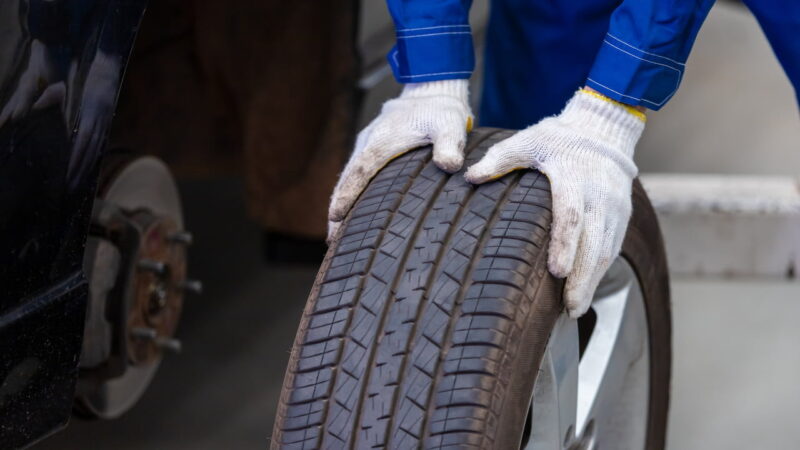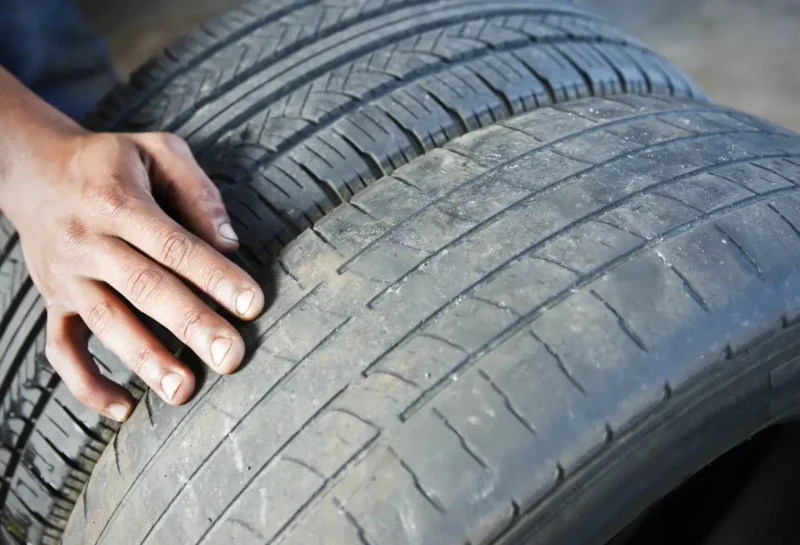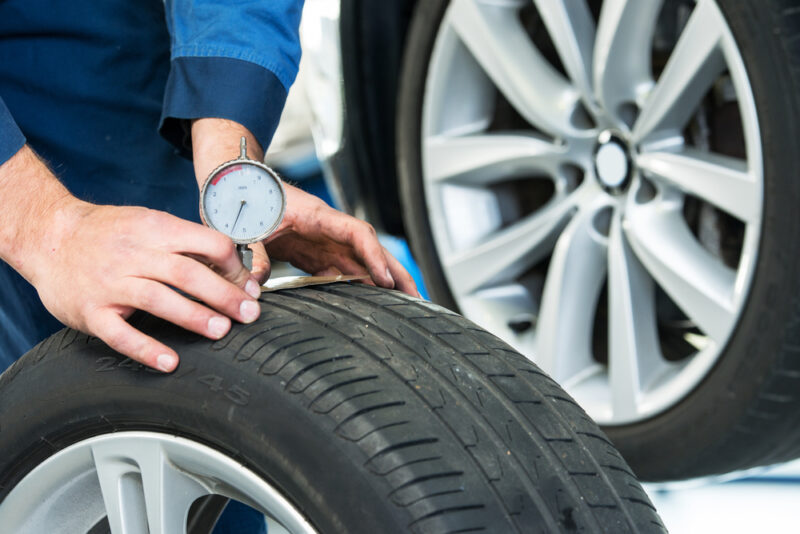Buying used tires can be a smart and cost-effective choice if you know what to look for. However, without proper inspection, you might end up with tires that are unsafe or not worth the investment.
If you are looking for where to buy them, almost every city has at least one junk yard that sells used tires. So, you can just look for those in your area. For example, St Catharines tires.
This guide will help you understand how to inspect used tires effectively and what potential issues you might encounter.
1. The Importance of Tread Depth

One of the first things to check when inspecting used tires is the tread depth. Tires with insufficient tread depth can be hazardous, especially in wet conditions. The tread provides the grip necessary to maintain control of your vehicle.
How to Measure Tread Depth:
- Use a Tread Depth Gauge: This tool is inexpensive and provides an accurate measurement.
- Penny Test: Insert a penny into the tread with Lincoln’s head upside down. If you can see the top of Lincoln’s head, the tread is too worn.
What Could Go Wrong?
- Reduced Traction: Tires with low tread depth can lead to reduced traction, increasing the risk of accidents.
- Hydroplaning: Insufficient tread depth can cause the tire to lose contact with the road in wet conditions, leading to hydroplaning.
2. Check for Uneven Wear
Uneven wear on a tire can indicate several underlying issues, such as misalignment, improper inflation, or suspension problems.
How to Check for Uneven Wear:
- Visual Inspection: Look for areas where the tread is significantly more worn than others.
- Run Your Hand: Feel for any inconsistencies or bumps in the tread.
What Could Go Wrong?
- Alignment Issues: Uneven wear often indicates alignment issues that could affect the handling of your vehicle.
- Shorter Tire Lifespan: Tires with uneven wear will not last as long as those with even wear, reducing the value of your purchase.
3. Look for Signs of Damage

Inspecting the tire for any visible signs of damage is crucial. Damage can include cuts, punctures, cracks, or bulges.
How to Inspect for Damage:
- Sidewall Inspection: Check the sidewalls for any cuts, cracks, or bulges. Sidewall damage is a serious concern and can lead to tire failure.
- Tread and Shoulder Inspection: Look for any embedded objects, cuts, or punctures in the tread and shoulder areas.
What Could Go Wrong?
- Blowouts: Damaged tires are more prone to blowouts, which can be dangerous at high speeds.
- Leaks: Punctures or cuts can cause slow leaks, leading to frequent tire pressure issues.
4. Check the Tire’s Age
Tires degrade over time, even if they haven’t been used much. Rubber breaks down, and the structural integrity of the tire can be compromised.
How to Determine Tire Age:
- DOT Code: Check the DOT code on the tire’s sidewall. The last four digits indicate the week and year the tire was manufactured. For example, a code ending in 1218 means the tire was made in the 12th week of 2018.
What Could Go Wrong?
- Old Tires: Even if the tread looks good, older tires are more prone to blowouts and other failures due to rubber degradation.
5. Confirm Proper Sizing
Ensure the used tires you’re considering match the specifications required for your vehicle. Incorrectly sized tires can affect vehicle performance and safety.
How to Check Tire Size:
- Vehicle Manual: Refer to your vehicle’s manual for the recommended tire size.
- Tire Sidewall: Check the numbers and letters on the sidewall of the tire. These indicate the tire’s size, load capacity, and speed rating.
What Could Go Wrong?
- Handling Issues: Incorrect tire size can affect the handling and stability of your vehicle.
- Speedometer Inaccuracy: Tires that are too large or too small can affect your speedometer readings.
6. Verify the Tire’s History

Whenever possible, try to learn about the tire’s history. Knowing how the tire was used and maintained can give you insight into its condition.
Questions to Ask:
- Previous Usage: Was the tire used on a personal vehicle or a commercial one?
- Maintenance: How often was the tire rotated and balanced?
- Storage: How was the tire stored when not in use?
What Could Go Wrong?
- Hidden Damage: Tires used on commercial vehicles or those that were not properly maintained may have hidden damage or wear.
- Improper Storage: Tires that were stored improperly can develop flat spots or degrade faster.
7. Inspect the Bead Area
The bead area of a tire is where it seals against the rim of the wheel. Damage in this area can cause air leaks and compromise the tire’s performance.
How to Inspect the Bead Area:
- Visual Inspection: Look for any tears, cracks, or deformities in the bead area.
- Run Your Finger: Feel around the bead for any irregularities.
What Could Go Wrong?
- Air Leaks: Damage to the bead area can lead to slow air leaks, requiring frequent tire inflation.
- Poor Seal: A poor seal between the tire and rim can cause the tire to come off the rim, especially in sharp turns or emergency maneuvers.
8. Consider Professional Inspection

If you’re not confident in your ability to inspect used tires thoroughly, consider having a professional do it. A trained eye can spot issues you might miss.
Benefits of Professional Inspection:
- Expertise: Professionals have the experience and tools to detect problems accurately.
- Peace of Mind: Knowing that a professional has inspected your tires can give you confidence in your purchase.
What Could Go Wrong?
- Overlooking Issues: Relying solely on your own inspection without sufficient knowledge can lead to overlooking critical issues.
- Unexpected Costs: Buying tires without a professional inspection can lead to unexpected repair or replacement costs down the line.
9. Assess Price Versus Value
While buying used tires can save you money, it’s essential to assess whether the price is worth the potential risks and future costs.
How to Assess Value:
- Compare Prices: Look at the prices of new tires versus used ones of the same make and model.
- Consider Lifespan: Estimate how long the used tires will last compared to new ones.
- Factor in Additional Costs: Include potential costs for repairs, alignment, and balancing.
What Could Go Wrong?
- False Economy: A low upfront cost can lead to higher expenses over time if the tires need frequent repairs or replacement.
- Safety Risks: Compromising on quality to save money can increase safety risks.
Conclusion
Inspecting used tires thoroughly before purchasing is crucial to ensure safety and value. By checking tread depth, looking for uneven wear, inspecting for damage, confirming the tire’s age, ensuring proper sizing, verifying the tire’s history, inspecting the bead area, considering professional inspection, and assessing price versus value, you can make an informed decision.








